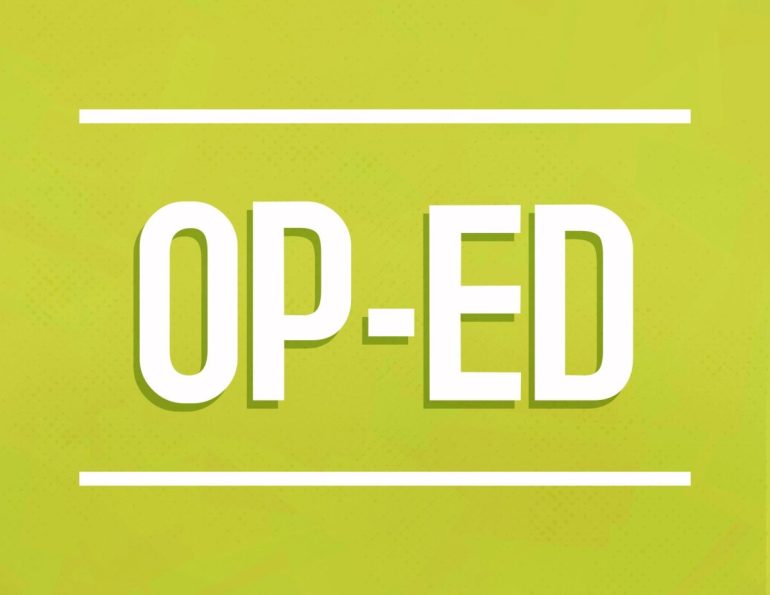Writing a compelling op-ed that grabs editors’ attention and resonates with readers requires more than a strong opinion. In a crowded media, your piece must stand out with clear arguments, timely relevance, and engaging execution.
An op-ed allows you to influence public discourse and establish yourself as a thought leader by translating complex issues into accessible arguments. Successful op-ed writers know that timing is crucial; engaging with trending topics can set your piece apart.
This guide will help you craft a publishable op-ed, focusing on developing a core argument, optimizing your submission, and mastering persuasive writing that inspires action.
Understanding the Op-Ed World

What Makes an Op-Ed Different
Op-eds occupy a unique space in journalism, distinct from news reporting, analysis pieces, or personal essays. They shouldn’t merely analyze current events or weigh alternative viewpoints. Instead, successful op-eds advance strong contentions and assert specific positions backed by credible evidence.
The fundamental difference lies in purpose: while news articles inform and analysis pieces explain, op-eds persuade. Your goal is to convince readers to adopt your viewpoint, support your proposed solution, or take specific action. This requires moving beyond summarizing key details to making compelling arguments that challenge existing thinking.
The Power of Timing and Relevance
Timing can make or break your op-ed’s chances of publication. Editors prioritize pieces that connect explicitly to current news events, upcoming anniversaries, or emerging trends. The best time to get published is when your issue is actively in the news cycle, and you’re among the first to present a unique perspective.
Consider multiple timing strategies: respond quickly to breaking news with immediate analysis, anticipate upcoming events that will generate interest, or identify emerging patterns before they become mainstream topics. A cancer researcher might tie their piece to a celebrity’s recent diagnosis, while a policy expert could leverage an upcoming legislative session or the anniversary of significant legislation.
Developing Your Core Argument

Identifying Your Unique Angle
Before writing a single word, you must crystallize your argument into a clear, defensible position. Many op-eds fail because they attempt to cover too much ground rather than making one point exceptionally well. Your argument should be specific enough to be compelling yet broad enough to matter to readers beyond your immediate field.
Start by asking yourself critical questions: Are you authoritative on this topic? Can you provide evidence of your expertise? Is your argument different or backed by substantially new information? Why should non-experts care about your perspective? Your unique angle might come from professional experience, research findings, personal background, or a fresh interpretation of existing data.
Building Evidence-Based Arguments
Strong op-eds ground opinions in solid research and credible evidence. This includes statistics from reputable sources, reports from credible organizations, expert quotes, scholarly research, historical precedent, and first-hand experience. Each piece of evidence should directly support your central thesis while building toward a logical conclusion.
Structure your evidence hierarchically, starting with your strongest points and supporting each with multiple forms of proof. Avoid the temptation to include every piece of supporting information you’ve gathered; instead, select the most compelling evidence that will resonate with your target audience while maintaining credibility with potential critics.
Mastering Op-Ed Structure

Crafting a Compelling Lead
Your opening paragraph must accomplish multiple objectives simultaneously: grab attention, establish relevance, hint at your expertise, and preview your argument. The lead often incorporates a news hook that makes your piece timely and connects to current events.
Effective leads might start with a striking statistic, a compelling anecdote, a provocative question, or a bold statement that challenges conventional wisdom. Whatever approach you choose, ensure it directly relates to your core argument and gives readers a clear reason to continue reading. Remember that readers decide within three seconds whether to engage with your piece.
The Three-Point Argument Framework
Most successful op-eds follow a proven structural formula: lead with your thesis, then present three main supporting arguments, each backed by evidence and leading to a logical conclusion. This framework provides enough depth to be convincing while maintaining the focus necessary for a short-form piece.
Your first point should be your strongest argument, immediately establishing credibility and momentum. The second point builds on the first while introducing additional evidence or perspectives. The third point often expands the discussion to broader implications, historical context, or future consequences.
The “To Be Sure” Paragraph
One of the most crucial yet overlooked elements of effective op-eds is the “to be sure” paragraph, where you acknowledge potential flaws in your argument and address obvious counter-arguments. This demonstrates intellectual honesty, prevents critics from dismissing your piece for obvious omissions, and strengthens your position by showing you’ve considered alternative viewpoints.
This section doesn’t need to be lengthy, but it should address the most significant potential objections to your argument. By acknowledging limitations or complexities, you build trust with readers and show that your position accounts for nuanced realities rather than oversimplifying complex issues.
Writing Techniques That Engage Readers

Using Plain Language and Clear Structure
Op-ed readers want to learn from you, but only if they can readily understand your message. Avoid jargon, technical terminology, and insider language that might alienate general audiences. Write as if explaining your argument to an intelligent middle schooler, using short sentences, clear words, and paragraphs of fewer than four sentences.
Strong topic sentences are essential for maintaining reader engagement and comprehension. The first sentence of each paragraph should indicate what follows, allowing readers to grasp your argument by reading just the opening sentences of each section. This technique also helps editors quickly evaluate your piece’s structure and flow.
Incorporating Personal Experience and Storytelling
While op-eds must be grounded in evidence, they gain power through personal connection and vivid storytelling. Share relevant personal experiences, use specific anecdotes that illustrate broader points, and help readers visualize the real-world implications of your argument.
First-person language can be particularly powerful when used strategically: “I know this first-hand because…” or “I work with people every day who…” creates immediate credibility and emotional connection. However, balance personal elements with broader evidence to avoid making your piece too narrowly focused on individual experience.
Optimizing for Publication Success
Length and Format Requirements
Most publications prefer op-eds between 500-850 words, with 750 words being the standard target. This constraint forces you to be ruthlessly selective about content, focusing only on essential arguments and evidence. Every sentence must serve your central thesis; eliminate tangential points, excessive background information, or redundant arguments.
Format your piece professionally with clear paragraph breaks, logical transitions, and a strong conclusion that circles back to your opening theme. While you can suggest a headline, don’t spend significant time crafting one, as publications typically write their own.
SEO Considerations for Digital Publication
In today’s digital media environment, understanding search engine optimization can increase your piece’s visibility and impact. Craft a clear, descriptive title that incorporates key terms early while remaining specific and avoiding jargon. Choose relevant words that potential readers might use when searching for content related to your topic, and integrate them naturally throughout your piece.
Include words in strategic locations such as your title, opening paragraphs, and subheadings, but avoid keyword stuffing that compromises readability. Your abstract or summary should include key findings, and within the first two sentences, as these typically appear in search results.
Submission Strategy and Follow-Up
Targeting the Right Publications
Research potential outlets carefully, considering their audience demographics, editorial preferences, and recent coverage of your topic. Local newspapers might be more receptive to pieces with regional angles, while national publications typically require broader significance and higher-profile expertise.
Study recent op-eds in your target publications to understand their style, length preferences, and the types of arguments they favor. Some outlets prefer data-driven pieces, while others emphasize personal narrative or policy analysis. Tailor your approach accordingly while maintaining your authentic voice and core argument.

